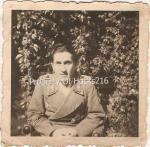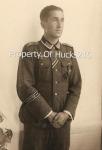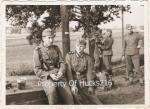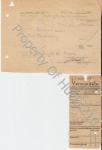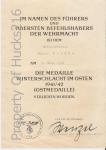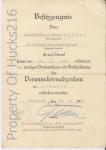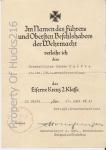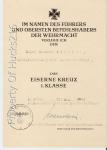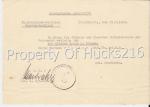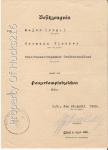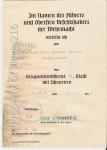-
Posts
3,680 -
Joined
-
Last visited
-
Days Won
9
Content Type
Profiles
Forums
Blogs
Gallery
Events
Store
Everything posted by hucks216
-
The following is taken from Masters Of Death: The SS Einsatzgruppen by Richard Rhodes (ISBN: 1-903985-56-0) (Pages 174-178): Jeckeln had planned the Babi Yar Aktion along the same basic lines as the Kamenets-Podolsky massacre. When the first Jews approached the Jewish cemetery on the morning of 29th September 1941, Sonderkommando 4a, two commandos of Polizei Rgt Sud [Polizei Btl’s 45 & 303] and Ukrainian militia were waiting for them. Testimony from a truck driver (name of Hoefer): “Once undressed, the Jews were led into Babi Yar. Two or three narrow entrances led to this ravine through which the Jews were channelled. When they reached the bottom of the ravine they were seized by members of the Schutzpolizei [the Polizei Btl’s] and made to lie down on top of Jews who had already been shot. This all happened very quickly. The corpses were literally in layers. A police marksman came along and shot each Jew in the neck with a submachine gun at the spot where he was lying….There was a ‘packer’ at either entrance to the ravine. These ‘packers’ were Schutzpolizisten whose job it was to lay the victim on top of the other corpses so that al the marksman had to do as he passed was fire a shot.” An Einsatzgruppen report on 2nd October 1941 summarized the Babi Yar Aktion brazenly, not even bothering to justify it as retaliation [for the recent explosions in Kiev after German forces had occupied the city]: Sonderkommando 4a in collaboration with the group staff and two commandos of Police Regiment South on 29th & 30th September 1941 executed 33,771 Jews in Kiev.
-
Erich Karrasch was an NCO in Polizei Btl 303 which he had joined on 9th September 1940 at a time when it was stationed in the Generalgouvernement. Two days after the start of Operation Barbarossa Polizei Btl 303 was sent to Russia as part of Polizei Regiment Sud (the other two battalion's in this regiment were Pol.Btls. 45 & 314). Polizei Regiment Sud was assigned to Einsatzgruppen C and participated in the numerous Aktions against the Jewish populations of the newly conquered lands. Reports show: 25 August: Pol.Rgt Sud shot 1,324 Jews 27 August: Pol.Rgt Sud shot 1,463 Jews ...and so on through the remainder of August & September including shooting 3,145 Jews at Zhitomir on 19th September. However it was on the dates of 29 & 30th September that Pol.Rgt Sud firmly placed its name in the history of the Holocaust with the massacre of over 33,000 Jews at Babi Yar.
-
And now another one of my favourite acquisitions of the year although it is connected with the darker side of WW 2 history. It is a Polizei Dienstpass to a member of Polizei Btl 303 which as part of Polizei Rgt Sud participated in the Jewish massacre at Babi Yar, and as the dates & Einsatz slips show, this man was there at the time although in what capacity he participated is not known as far as I am aware.
-
Next up we have his Wound Badge In Black citation signed by Oberstleutnant Foellmer of GD's Replacement Btl organisation. He was originally the commanding officer of Infantry Ers.Btl 99 (mot.) in 1940 that acted as a replacement unit for GD before & during the French Campaign in 1940 and was eventually absorbed into Grossdeutschland.
-
This is a more recent addition to the collection then the Pz.Rgt GD Officers citation grouping and one of my favourite acquisitions of the year. The grouping consists of 4 citations, a wound tag, insignia and a handful of photos for a soldier who served as a Sturmboot Pionier in Infantry Rgt Grossdeutschland and stayed with that unit all through its various reorganisations, eventually being evacuated from the East in April 1945 as a member of Pz.Pi.Btl GD due to injury. I was thrilled to get this set as the EK II citation bears the very rarely seen signature of Grossdeutschland's first official commander - Oberst/Generalmajor Wilhelm-Hunald von Stockhausen.
-
And the EK I citation bearing the seemingly obligatory GD signature of Generalleutnant Walter Hoernlein. Major Fischer's Soldbuch, Driving Instructors Licenses and post-war papers reside in another collection and the owner has kindly shared the scans of them with me (as I have done likewise with these citations) and from the Soldbuch it shows that after leaving GD Major Fischer went on to serve with GD's replacement organisation at Cottbus and also with Technische-Lehrgruppe Panzer-Lehrgaenge 'Tiger'.
-
Following on from that we now have his EK II citation which he received while serving with Pz.Rgt 203 and this is my particular favourite of the group as it bears the rarely seen hand signed version of General Brockdorff-Ahlefeldt's signature. His signature is more usually seen as a facsimile on the citations for the Demjanskschild .
-
Thought that I would share this large grouping that has been in my collection for a while now. It consists of 6 citations & one note for a Hauptmann/Major who served with Pz.Rgt 203 and then Pz.Rgt Grossdeutschland. What I particularly liked about this group and was one of the main reasons for buying it is that it contains a whole host of renowned hand signed signatures, including one that is rarely seen unless it is the facsimile version. To start we have his promotion citation for promotion to Hauptmann in 1939 and is signed by Generalfeldmarschall von Brauchitsch.
-
For Cholm he was serving with Jagdkommando 8 (as shown in the first entry in Section C on Pg 4) rather than Jager Btl 8 although the latter was formed from the first 4 Kompanies of the former later in 1942. You can see the OOB (which shows Jagdkdo 8) listed for XXXIX AK in the entry dated 22nd January 1942.... http://www.lexikon-der-wehrmacht.de/Gliederungen/Korps/XXXIXKorps.htm
-
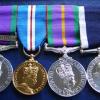
Soviet Russian Naval Side Cap & Shoulder Boards
hucks216 replied to hucks216's topic in Russia: Soviet: Other Militaria
I don't think that is entirely true. I know absolutely nothing on this subject but there were plenty of hammer & sickle/red star insignia to be seen when I was aboard a Russian destroyer in 2006. Even the cap a member of the crew gave me (see above) still retains the red star with hammer & sickle insignia. -

Soviet Russian Naval Side Cap & Shoulder Boards
hucks216 replied to hucks216's topic in Russia: Soviet: Other Militaria
Thank you for that Gordon. I got that one from a sailor on a Sovremenny class destroyer in 1993.






